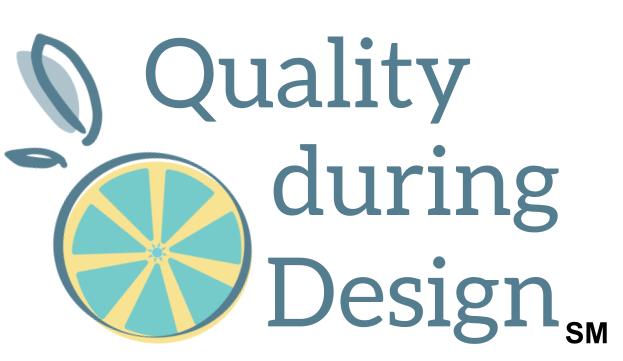Applying Quality Strategy for Great Designs is like Pruning a Fruit Tree for the Best Fruit

Applying quality thinking to a design or creative process is a lot about strategy.
Like deciding how and when to prune a fruit tree for the best fruit, we can use the right quality tool or method at the right time to get our best designs.
The blue citrus? That represents our 'perfect' design.
To apply quality during design, it's helpful for designers to understand the quality methods available and how to use them to make decisions. This includes asking a quality professional to analyze something and then knowing how to act on the results.
The Quality During Design.com site is for product design engineers - an educational website, blog, and podcast community dedicated to sharing resources, practical advice, and problem-solving techniques. If we apply quality thinking throughout the design cycle, we can develop products that others love, for less total cost.

My goal is to help others in product design learn how to incorporate quality thinking in their design processes to get their best designs. I think a world of products that are safe, dependable, and easy to use would be a wonderful thing!
Everyone benefits when quality methods are integrated early into the design process.
I call this quality during design or applying quality thinking. I believe (and have seen) that this can lead to products that are safer, more reliable, and more intuitive to use; a development process that avoids surprises; and cost savings through doing the right thing early.
Applying quality thinking to a design or creative process is a lot about strategy: using the right tool or method at the right time in the development process. Just because you missed doing something at the perfect time doesn’t mean it’s never worth doing at all. It doesn’t always have to be retroactive, either, to a point where you’re forced to go back and redo something.
I struggled communicating this quality thinking/strategy message. It’s not a tangible idea, and it’s not a consistent formula to apply across all business spaces. One winter day, I looked out onto my modest orchard and started thinking of how I was going to prune them for this year’s growth to get the best fruit.
And, then the thought hit me: applying quality thinking to a design process is a lot like deciding how to prune a fruit tree! Could I use this visual to better communicate what it is I promote?
I’ve learned — through my hobby as an orchardist — that when and how I prune is dependent upon many things: what type of fruit is growing, how old is the tree, when was it last pruned (is it neglected), how thick or long is the limb (and so on)? There are fourteen pages of text and diagrams in my gardening book dedicated to teaching others how to properly prune an apple tree! And, still, when I start trimming, I can feel unsure and concerned that I’m going to hack my trees to produce tiny, stone-hard fruit or no fruit at all. But I get more confident the more I do it, and I've gotten great yields in the last few years. Practice makes improvement!
Applying quality thinking to a design process is like pruning a fruit tree: the design process is the limb, the desired product is the fruit it grows, and quality tools and methods are the shears.
In gardening, which gardening tool I use and when depends on how the limb is growing. In design, which quality methods and tools I choose and when I use them are dependent on the design process for that business. With guidelines and practice, designers can use quality thinking to cultivate design ideas, guiding and trimming them as they grow.

